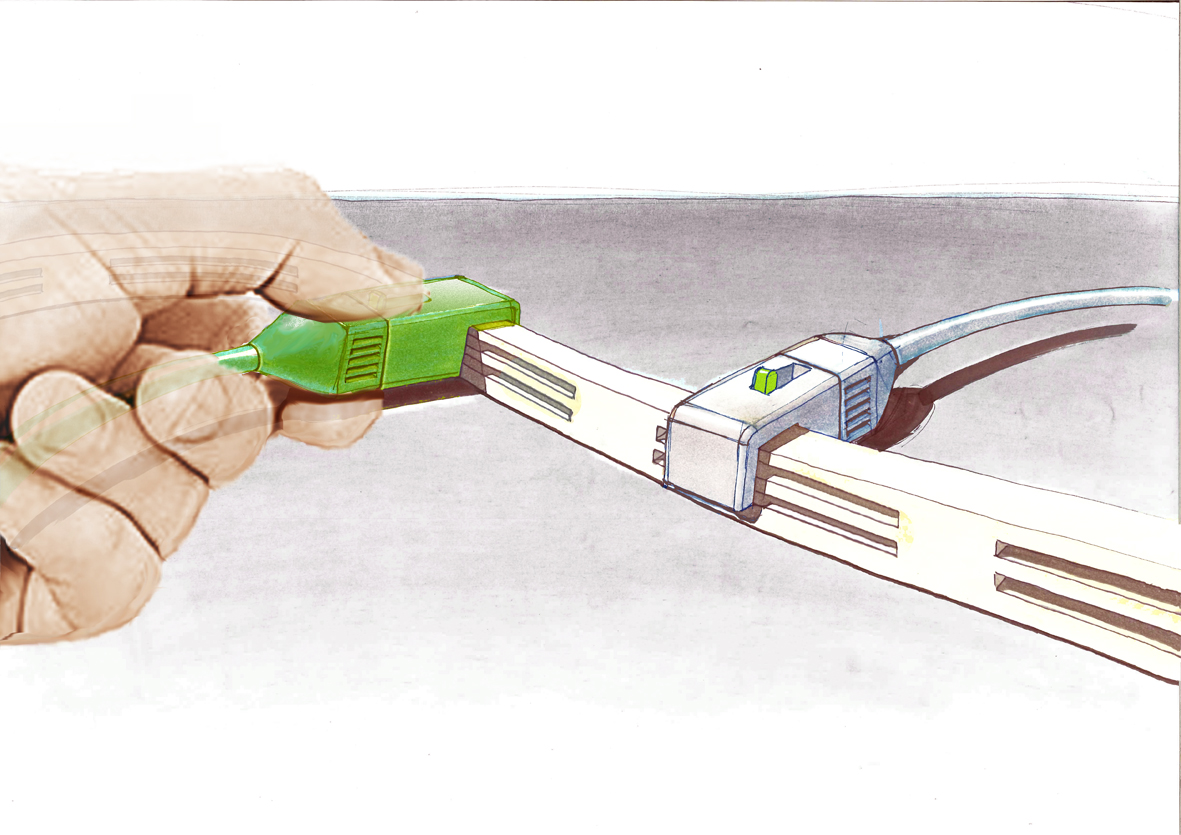It may sound like an oxymoron, but the inductive power transfer technology that PhD student Frank van der Pijl developed really does allow for a power cable that is fully insulated.
Just a brief look under your desk will illustrate why wireless power transfer is such a great idea; it could liberate you from the mounting cable spaghetti. Indeed, some dream of a table that wirelessly charges the ever-hungry batteries of your laptop or smartphone. Others imagine a road that charges the batteries of the electric cars driving over it. In short: wireless power transfer is a hot topic.
With the E-snake, PhD student and part-time entrepreneur, Frank van der Pijl (MSc), developed his own version of contactless power transfer; instead of doing away with cables and sockets altogether, the E-snake allows you to extract power at any point along the cable at any AC or DC voltage you would require without making an electrical connection.
In his thesis, ‘Inductive and wireless energy transfer in residential applications’, Van der Pijl pictures an E-snake all along the walls of a room instead of a couple of sockets in the corner. And instead of plugging in, the E-snake allows users to ‘clamp’ onto the cable at any point for contactless power transfer.
Although the title of his thesis suggests otherwise, households will probably not be the primary market for this technology. Van der Pijl’s firm, Optimos Apto, first targets the industries where the absence of sparks and the inherent waterproof characteristics of contactless power transfer are important benefits. As the company is situated in Rotterdam, the offshore industry immediately springs to mind.
“Optimos Apto will concentrate on licensing the technology,” says Van der Pijl. “It’s up to the market to come up with profitable applications.”


Technology
The technology is based on the magnetic power transfer known from transformers. In this case, the supply cable forms the primary coil and the clamp contains the magnetic core, the secondary coil and some power electronics to produce the desired output voltage (220 V AC, 12 V DC or anything in between).
It’s perhaps hard to imagine a coil in the form of a cable, but think of thin chintz-wound copper wires running one way at the mantle, back though the core (in a co-axial configuration) many times over. The resulting magnetic field is trapped inside the cable (important for preventing health hazards), and may be picked up by special clamps that reach into the insulated cable.
The frequency used (100.000 Hertz) is a trade-off between increasing energy efficiency of transformers with higher frequencies, and at the same time decreasing efficiencies of power electronics and the primary coil.
The two main challenges for Van der Pijl were: to improve the system’s energy efficiency while maintaining its simplicity of use. With an overall efficiency of 97 to 98 percent, the first challenge seems to be overcome. The second, keeping the system as simple as plugging into a wall socket, required an advanced system of power matching called ‘quantum modulation’.
The primary coil (being the cable) is fed a 100 kHz AC current from a power converter. As long as the current is in phase with the voltage, their product is a ‘quantum’ of power. So, each second 200-thousand power quanta are sent into the cable. By constantly adjusting these quanta to the demand, the system quickly reacts to any changes due to devices being clamped on or off. Experimental test show that the proposed mode of control adapts to load changes within 10 milliseconds (half a 50 Hertz period).
Frank van der Pijl, ‘Inductive and wireless energy transfer in residential applications’, 15 October 2012, 12:00 Aula. PhD supervisors at Electrical Engineering, Mathematics and Computer Sciences: Prof. Bram Ferreira and Prof. Pavol Bauer.



Comments are closed.